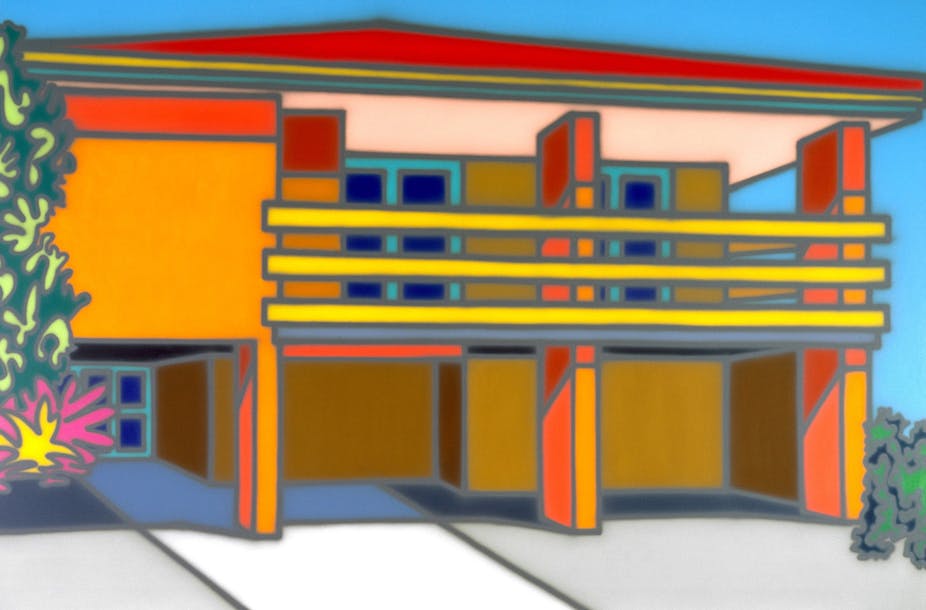Announcements by both NSW and Victorian governments in recent weeks that they would continue to encourage the development of new housing on the fringes of Sydney and Melbourne revealed that urban planning in Australia is yet to find a solution for unlocking the potential for housing redevelopment in the middle suburbs of the nation’s largest and fastest growing cities.
Targets of more than 60% and 50% of infill housing for each city respectively, established in recent metro strategic plans, are not being achieved.
In the face of sustained population growth, our big cities continue to sprawl into the greenfields, despite the now well recognised problems associated with higher infrastructure costs, lack of amenity, car dependency, poor job access, diminished agriculture and open space.
A model for directing population and investment inwards – to inner city brownfield precincts – was established over 20 years ago thanks to the federal government’s Better Cities program. Of itself, however, brownfield redevelopment will fail to deliver the net additions of infill housing required.
The solution lies in the greyfields – those ageing but occupied tracts of inner and middle ring suburbia that are physically, technologically and environmentally failing and which represent under-capitalised assets. Here, attempts have been made to intensify housing and employment around activity centres and transit oriented development projects. Outside of CBDs, especially in Melbourne, these designated centres have tended to under-perform. Transport corridors have also been advanced as a focus for higher-density development in the major cities, but recent research at the Swinburne Institute for Social Research suggests that the volume of new infill housing in Melbourne does not vary by level of public transport access, with most remaining car dependent.
Most infill housing in the middle suburbs has been occurring in a fragmented, sub-optimal fashion. As greyfield housing comes onto the market (typically properties where 80% or more of the total value is vested in the land) it is purchased, demolished and rebuilt, typically resulting in yields of 1:1 and 1:2-4 dwellings.
There is a well established model for this class of development. A major gap in the residential property development market is for redevelopment projects capable of yielding net infill dwellings in the range of 6 to 20 units as a medium-density product (four to six storey height). There is a major opportunity for the property sector in this segment of the market – greyfield residential precinct regeneration – but it currently lacks a development model.
A new logic for urban development is required: green urbanism (see Figure 1). As conceived here, this involves a new policy focus that positions regeneration of greyfields precincts as a principal objective: activity centres, transport corridors and greyfield residential precincts.
Figure 1

A recent study for the Australian Housing and Urban Research Institute called Towards a new development model for housing regeneration in greyfield precincts, led by me has identified areas where innovation is needed in order to establish a viable development model:
New urban policy capable of articulating a long-term strategy for targeting regeneration in the middle suburbs;
Establishing an urban regeneration agency with responsibility for greyfields as well as brownfields;
A digital spatial information and planning platform with associated tools capable of identifying the most prospective precincts for regeneration, and providing capacity for stakeholder engagement in visualising development options;
New urban designs for low rise (four to six storeys) medium-density precincts with high environmental performance (energy, water, waste) and high residential and social amenity;
Innovative construction processes and changes to the labour force capable of providing more attractive and affordable solutions to medium-density housing developments. (Industrialised processes that include combinations of prefabricated panels, service systems and interiors that can provide fast turnaround options for replacing existing low-density housing);
A range of finance models capable of being matched to traditional private sector for-profit developments as well as hybrid private/community not-for-profit projects;
Proactive community engagement that radically departs from the established “placatory” or “adversarial” models that often come into play with populations targeted for redevelopment;
A new “regen” planning code capable of accommodating compact city strategies.
To continue applying 20th century solutions to a 21st century urban problem will not deliver cities that are competitive, productive, liveable and environmentally sustainable.
In this context, greyfield regeneration joins other “wicked” urban challenges - along with storm-water and re-use of waste water, renewable energy systems and zero-waste system - confronting governments, industry and communities.

